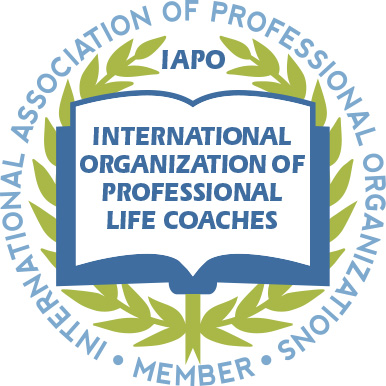Welcome to How to Find Happiness, Lesson 10, Generosity and Gratitude: How to Take It to the Next Level.
It’s the final lesson, and what an adventure it has been. We’ve covered a rich collection of topics to help us understand our own definition of happiness better, discover our life’s purpose, shed baggage that may be holding us back, and more. This week, we will cover two topics essential to a happy and contented existence: generosity and gratitude.
But before we get started on these new areas, let’s review where we have been together so far.
How to Find Happiness Recap
- Lesson 1 described five key segments of well-being that contribute to a happy and contented life. The exercises helped us identify areas where we are thriving, and others that may warrant our attention.
- Lesson 2 explored areas of personal energy. We learned how to replenish and maintain energy stores essential to happiness. The exercises helped us get clear on the types of energy we need to build, and tactics to ensure we continue to feel more energized.
- Lesson 3 focused on the science of happiness, understanding its components, what each means for us, facts we should know, myths we should ignore, and lessons that will help us find more contentment.
- Lesson 4 was all about Life Purpose. We focused on understanding our personal gifts, discovering our life purpose, envisioning our best future life, harnessing the power of our own decision-making and learning to follow our heart.
- Lesson 5 covered Shame. We discussed the difficult topic of emotional baggage. The exercises provided helped us uncover shame we may be experiencing, ways to overcome and shed those burdens so that we may move forward to a life full of more positive emotions.
- Lesson 6 was devoted to Blame. We learned about blame shifting and self-blame and why it is so important for us to minimize both behavior patterns.
- Lesson 7 was all about Healthy Relationships. We covered building healthy relationships with ourselves and others.
- Lesson 8 discussed Money. The exercises helped us gain insight into our own relationship with money and identify ways that we may best use the money we have to nurture a positive, contented life.
- Lesson 9 focused on Habits. We learned about how to tap into our natural tendency to form habits to help us bring more positivity and contentment into our daily lives.
If you would like to start this series from the beginning, go to How to Find Happiness: 10 Lessons to Change Your Life.
Generosity and Gratitude
This week, we’re going to cover two areas that are keystones to a happy and contented life.
It’s fair to say none of us can truly be happy if generosity and gratitude are not prominent in our lives and thoughts. So, let’s dive into this!
The Benefits of Generosity
Want to be happy? Give something away! Generosity can be amazingly powerful; not only is it the “right thing to do”, but scientists have proven it’s incredibly good for us, emotionally and physically.
In one study, participants were given $20 and were given the choice to spend it on themselves or to spend it on someone else. Guess who was happier?
But the benefits don’t end there.
When we are generous, we experience reduced stress, we have improved relationships with others, and we live longer, too.
The absence of generosity – or having a somewhat “stingy” demeanor – has been shown to have the opposite effect on all counts. So, let’s all do everything we can to avoid that situation.
Finding Ways to Work Generosity into Your Life
This week let’s focus on finding new ways to be generous.
Some of us may wish to donate to causes we deem worthy. But there are plenty of options that don’t cost a penny. We can seek out volunteer activities, like serving in a hospital, nursing home, animal shelter, campaign, election, or school.
Those of us who can’t spare time or money can simply choose to live an altruistic life.
According to Webster’s, altruism consists of the “belief or practice of disinterested and selfless concern for the well-being of others”. I’d insert the word “sincere” in there somewhere, too.
And something tells me that an altruistic life leads to philanthropy, volunteering, or all of the above.
There’s really something for everyone and there’s truly no reason why we can’t all choose to be generous, in one way or another.
Choosing to be Generous Is Key
Making the choice to do so turns out to be very critical.
Some organizations have “volunteer” events, where employees are expected to participate.
Some schools pressure parents into mandatory “volunteer” hours.
Other groups can pressure you to do something you don’t want to do, do something at a time that is inconvenient for you, or buy something that you neither need nor want.
Unfortunately, these situations do not generate the benefit of activities where we choose to give.
Our brains and bodies know the difference.
So, when we do something, we were “voluntold” to do, we don’t get the health or other benefits attached to a genuine act of generosity.
Don’t Be Bullied into Giving Away Your Time or Money
“Just Say No”. If an activity doesn’t feel right, fit right, or make your heart sing, graciously decline.
If you don’t believe in a cause, don’t give money to folks pandering outside the Wal-Mart.
Don’t buy Girl Scout Cookies if you’re trying to watch your calories (maybe give them a donation instead, if you are so moved).
And don’t buy the wallpaper, greeting cards, pizza, coupon books, or whatever – Just Don’t Do It.
But do SOMETHING.
Give from your heart, whether it be time, money, old clothing, prayers, positive energy, a home cooked meal for a friend with a sick family member, a donation of babysitting to a young couple who need a night out, raking leaves for an elderly neighbor, or an hour of tutoring to a struggling student.
Generosity Doesn’t Have to Involve Gifts
And remember that generosity doesn’t have to be material – we can give attention, patience, support, and unconditional love to each other every day, at no cost, and without it taking additional time.
Something as simple as a kindly smile can “qualify” as an act of generosity – a selfless act that benefits others.
When we are generous, we feel better, and those around us do as well.
This week let’s find a new and creative way to demonstrate the spirit of generosity among us, and enjoy the benefits to each other and to ourselves, too.
Want to take generosity to an entirely new level? Consider how you can contribute to the world or the community through acts of altruism or kindness.
Gratitude
Practicing gratitude has long been acknowledged as a means to achieve and maintain higher levels of happiness.
We’ve all been taught to “count our blessings” and say “thank you” from an early age.
But there is so much more to the practice of gratitude.
There are many benefits to incorporating gratitude into our lives.
We, ourselves, benefit both from practicing gratitude and from being happy.
But making gratitude a priority is good for those around us, too.
It enables us to be a better friend, partner, parent, brother, sister, spouse, and so on.
The “Best Way” to Show Gratitude
So, this week, let’s focus on how to do it best. That’s right. Scientists have identified ways to practice gratitude most likely to benefit us.
It’s about having a structured conversation with ourselves, in a way that helps keep the dialogue fresh.
Our thinking should focus on the present moment – and what is going well.
Even in challenging times, we must seek to identify what I call the “rays of sunshine”.
Some examples:
- Perhaps we struggle with a work challenge that is making life difficult. But we have a wonderful, loving spouse.
- Perhaps we recently ended a relationship that we thought was “the one”. But we have a strong family to support us.
- Perhaps we received concerning news about our health. But we have a supportive network of friends, good health insurance and access to quality care.
For each “ray of sunshine” we identify, think about the people who helped us find that place in the sun.

If we are grateful for our job – was there a mentor who encouraged us to pursue it?
Is there someone who gave us an introduction or recommendation that made the difference?
Someone who encouraged us to chase our dreams?
If we’re grateful for a strong family and support system – who in our family cultivated that loving atmosphere in our home?
Who did what to nurture our family relationships and keep them strong?
Practicing Gratitude in the Moment is the Best
According to scientists, using this approach to cultivate gratitude is most effective for a number of reasons.
- It keeps things novel. Our lives change day-to-day. What is going well today may not be going as well tomorrow. By seeking out daily or weekly “rays of sunshine” we take the focus off our troubles, and keep blessings front and center in our thoughts.
- When we achieve a goal, or enter into a new relationship, the happiness boost we get is short-lived because we adapt quickly. Our ability to adapt is a blessing when bad things happen, but means we don’t relish the up-side as long as we should. By practicing gratitude the way it’s described here, it keeps our gratefulness “fresh”. We retain the “happiness boost” longer.
- Practicing gratitude in the moment helps us steer clear of comparing ourselves to others. When we’re focused on what’s going well, those thoughts get crowded out of our minds. The brain is not capable of having positive and negative thoughts at the same time. Let’s all make it easier for us to choose the positive ones!
This week let’s practice “gratitude in the moment” as often as we can.
And let’s figure out how to do it so it becomes a habit – one that we never need to break.
And let’s allow our boosted happiness to become something that others are grateful for when they count their blessings!
Let’s Wrap It Up!
The table below includes questions to help reinforce what we have learned about gratitude and generosity. Before we tackle them, pull out your notebook and review notes from the last few weeks.
- Which areas of well-being did you decide to focus on?
- What kind of energy do you need most?
- Have you learned more about how you define happiness?
- Do you have a better sense of your life purpose?
- Are there areas of shame and blame you are working to address?
- Or relationship challenges you wish to overcome?
- Do you see connections among these topics that relate to your feelings about money?
- Are you beginning to see any themes that will help you develop a more holistic strategy to achieve happiness and contentment?
Now, are you ready to apply what we’ve discussed related to generosity and gratitude?
How to Find Happiness: Summary Questions
| Name 3 ways that you plan to boost your gratitude practice. | Name 3 new ways that you plan to demonstrate generosity in your life. |
| What three things are you most grateful for in this moment? | Other than the “biggees” (health, family, shelter, etc.) what small things will you begin to acknowledge more often? |
| When do you plan to practice gratitude regularly so that it becomes a habit? | Which weeks of 10 Weeks to Happiness did you find most helpful? |
| Who would you like to be more generous with? | What will you give them (time, attention, support, etc.)? |
| Which topic that we covered was most relevant to your personal contentment journey? | Have you been able to maintain the positive energy you need? If not which energy source do you most need to replenish? |
| Have you learned anything about your relationship with money? | Are you using our tendency to develop habits to bolster your personal happiness? |
| Have your personal relationships benefitting from any of the topics we have covered? | Which one has made the biggest impact? How will you sustain that impact? |
Do you have ideas about how to incorporate generosity and gratitude in your life?
Can you “connect the dots” of our ten weeks together?
Hopefully they coalesce into some meaningful messages or “soundbites” to help keep your commitment to a contented and happy life stay fresh.
Please leave a comment and share what you have learned on this journey with all the rest of us. After all, we are all in this together – and we are all so much more than enough.
Thank you, as always, for reading.
If you haven’t yet subscribed, please visit KindCompassCoach and enter your email address so you never miss a post.
As Amazon Associates, we may receive a small commission (at no cost to you) for items purchased through links in this post.

Joan Senio is the founder of KindCompassCoach. Joan’s career includes clinical healthcare plus 20+ years as an executive in a nationwide health care system and 15 years as a consultant. The common threads throughout Joan’s personal and professional life are a commitment to non-profit organizations, mental health, compassionate coaching, professional development and servant leadership. Joan has had the privilege of mentoring early and mid-career professionals as well as current and future executives and leaders. She is a member of the International Organization of Life Coaches, serves as a thought-leader for KuelLife.com and is also a regular contributor to PsychReg and Sixty and Me. You can read more about Joan here: Joan Senio.





No Responses